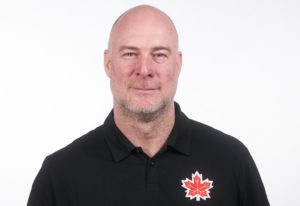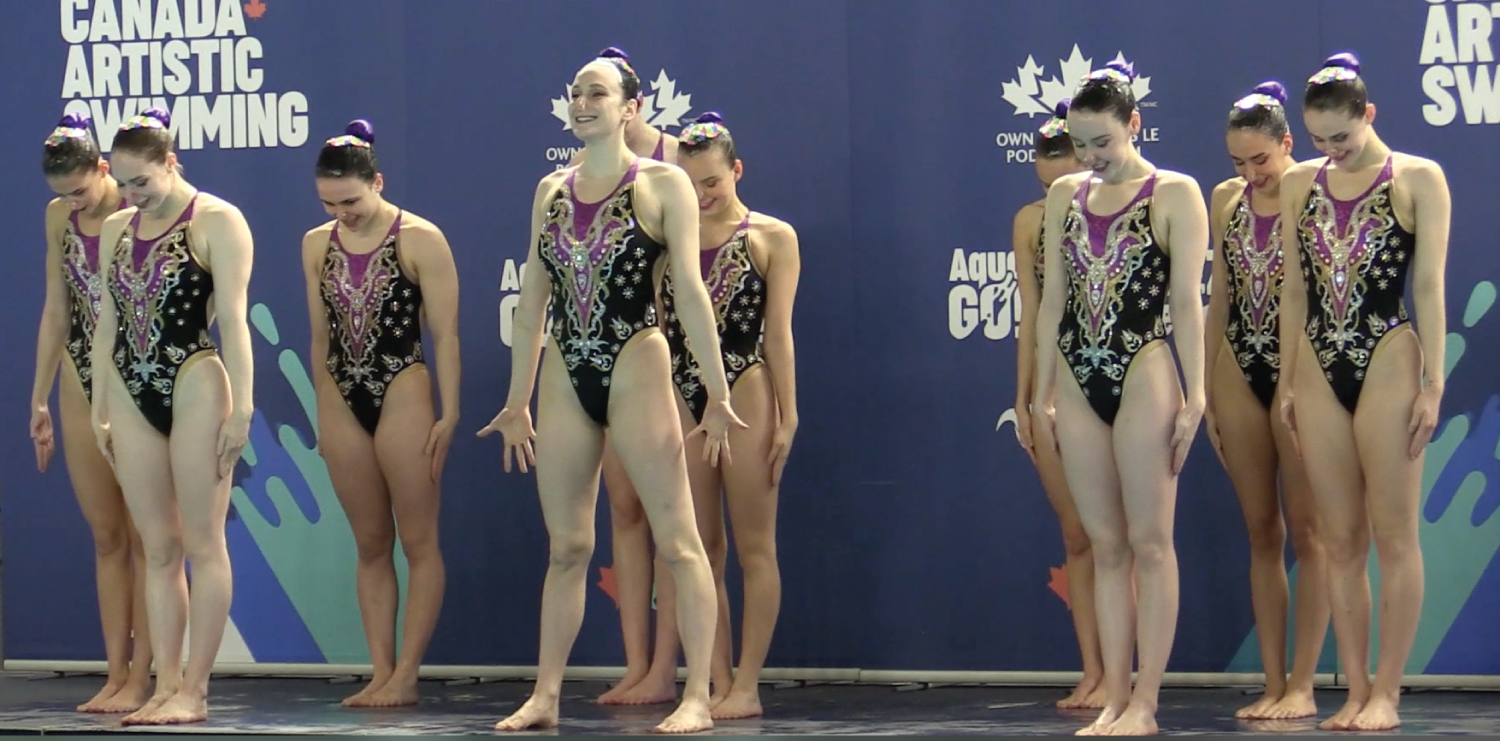There is a natural transition period when athletes in a high performance sport finish competing at an Olympic Games. For the athletes who represented Canada in artistic swimming at the Tokyo Games, it was the culmination of five plus years of planning, instead of the usual quadrennial cycle. With the 2020 Games postponed a year due to the world-wide Covid pandemic, it also presented an unusual planning cycle, compacting from four to three years the time to prepare for the next Olympic Games, set to take place in Paris, France in the summer of 2024.

Canada’s Head Coach, Gàbor Szauder, has a plan mapped out to prepare the next group of athletes to compete in Paris. And the plan has to be flexible enough to accommodate changes to the FINA Artistic Swimming World Series schedule, as well as that of the FINA World Championships. Both have been affected by world-wide events, with not only changes in host countries, but in the time of year they will take place.
Szauder has taken these changes in stride, because he sees the development of the team as a process. “The artistic swimming sport is changing. We used to only see teams when they had trained and trained and then revealed their routines as perfect. Our approach is to see continuous improvement from one competition until the next.”
By example, the Canadian team participated in the FINA Virtual Artistic Swimming World Series event that will be streamed March 19 and 20. With only four weeks of training before the routine had to be recorded and submitted for judging, he knows his team is already well beyond what viewers will see on the broadcast.
“I’m very proud of how our athletes were on the virtual event recording. I am fine with the scores we will receive, because in another month our scores will be higher, and then after four months, we’ll be higher still,” he said. “Sport people understand that artistic swimming is progressive. We can’t take brand new athletes together in the pool, and immediately they can perform at the same level as the Olympic team did. But after two years of training together, they will be!”
Gàbor recently sat down with CAS communications consultant Barb MacDonald, where she asked him to describe the senior training so far, to outline the next steps in Canada’s preparation for this season and to look ahead to the lead-up to Paris 2024.
What happened after you finished competing in Tokyo last summer?
You always give the biggest possible rest after the Olympic Games. That’s the peak of everyone’s career. Everyone who participated in the work to get to the Olympic Games needed to rest. Even if athletes have declared that they want to continue, you need them to rest and to recover both emotionally and physically. Otherwise, it would be too much. Also, athletes need some time to decide their next steps for school and life.
How did you go about selecting the next group of national team athletes?
Canada’s situation last fall was quite different from elsewhere in the world, with all the various Covid restrictions in the country. So we held four different development and audition camps across the country (British-Columbia, Saskatchewan, Ontario and Quebec) and then invited athletes to Montreal for another week of camp before finalizing the selection.
How did the Covid restrictions affect the athletes’ ability to train prior to the selection camps?
Canada had some of the toughest Covid restrictions in the world. There is much you can do with dryland training. You can keep your cardio, strength and flexibility up, but it’s not the same as being in the pool. And then when you could go back into the pool, it’s impossible to do things like highlights when you can’t get closer than two meters to each other. We are behind because of these things, but we have a very consistent training plan to get to where we want to be.
What will you focus on first?
Even in preparation for Tokyo, we had already chosen a different technical direction than any other country. We decided to build our athleticism and try to pass our opponents in our physical skills. I think it was very visible at the Olympic Games that we were the most physically prepared team. And that along with Ukraine, we had the most difficult and the highest highlights. They take incredible strength and coordination to achieve. So, the first thing we will do now is to build our physical stamina again to get to that same place with the new team.
There are many other priorities for our team both in and out of the water. We should meet again, or you should speak with my colleagues to learn about these plans as well. There is a lot of important work going on at CAS related to athlete on-boarding, training environment and team culture.
Why is it so important to build physical capacity?
I believe that this is the future of the sport and this is what opens up the competitive environment. You need explosive power to create dynamic highlights. You gain that ability from dryland training. It’s like training for weightlifting, where the snatch is movement with explosive power. Biomechanically, it’s almost the same movement so that’s why we work almost 40% of our time in the gym.
Did you change your routines for this year?
We kept the two Olympic team routines to compete this year. We started to work in January so it would be very pointless to try to quickly build two new routines for a world championship, especially when we weren’t sure quite what was happening. And as Olympic routines, they are very challenging. Also, with the new judging system, it didn’t make sense to create new routines, until we see what rule changes will be in place and when.
What will people see in your first competition?
With only four weeks to prepare, we kept things simple. That is what I chose, and it worked. It would not have been responsible to try more complicated highlights for example. We will add more difficulty as we have more time to practice together. Obviously, we will improve, and we expect the officials to notice that we are making continuous progress from competition to competition and that what we show with one month of training is not where we are after five months. To me, that is sport. It’s a process and you have to be brave to show each part of the process.
What about the highlight routine?
We do have a new highlight routine for the FINA events, choreographed by Denise Sauvé. We have taken the best of our Olympic highlights and created a competitive routine. We work with an expert acrobatic coach, Luc Belhumeur, who comes from freestyle skiing. One of our longer goals is to develop more flyers with acrobatic skills. It’s another area where Ukraine and Canada are raising the difficulty level in the sport.
How has the 2020 Olympic team from 2020 stayed connected with the training centre?
I think this is the first time that so many of the Olympians have stayed involved after a Games. Of the nine Olympic athletes, seven are still participating in some way. Three of them are still competing with the team, while others are assisting in coaching, mentoring or coming to swim. That has been very beneficial to the other athletes who are in the high performance program.
What’s your role as the head coach?
My job is to create the plan – and right now I have worked backwards from the 2023 Pan American Games in Chile (which has traditionally been the qualifying event). That’s our first milestone goal. I need to lead the staff team to fulfill their jobs to keep the whole environment calm and give a very logical progress to it, building it up brick by brick, and to keep everyone aware of the time and the work needed. I also make sure that we abide by the written rules for the sport, and not fall into trying to please a certain aesthetic that is impossible to achieve. That’s the approach we are taking as we work towards Paris, and I also believe that the new judging system (expected to be in place by 2024) will support that.
Footnotes
The Canadian team is scheduled to travel to Paris in April for the next event in the FINA Artistic Swimming World Series, and then onto the FINA ASWS Super Final now scheduled for Greece May 20-22, followed by the artistic swimming events at the FINA World Championships in Budapest June 18 – 25.
Despite continued uncertainty, the organization is committed to providing a stable, positive and focused training environment, able to overcome challenges that come the team’s way. The long-term plan has been put into motion, and it will be exciting to see it unfold as Coach Szauder says, brick-by-brick.



